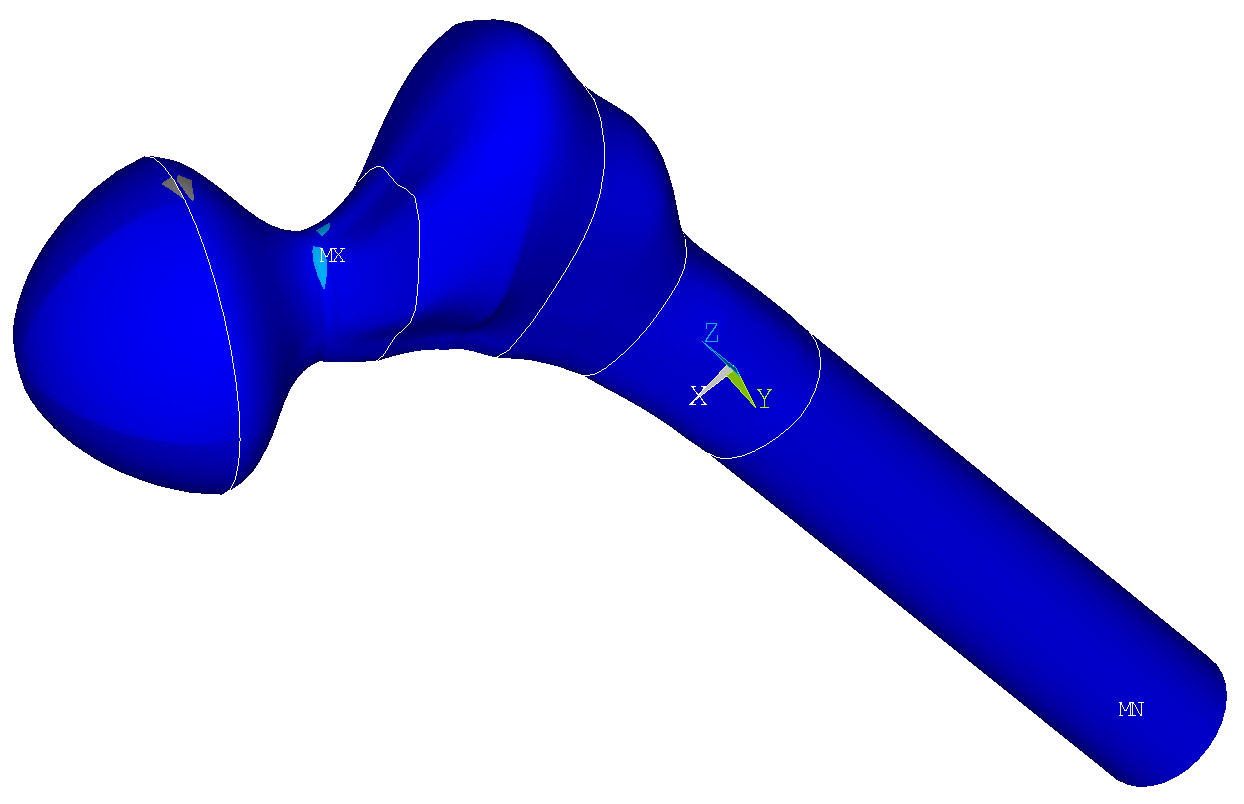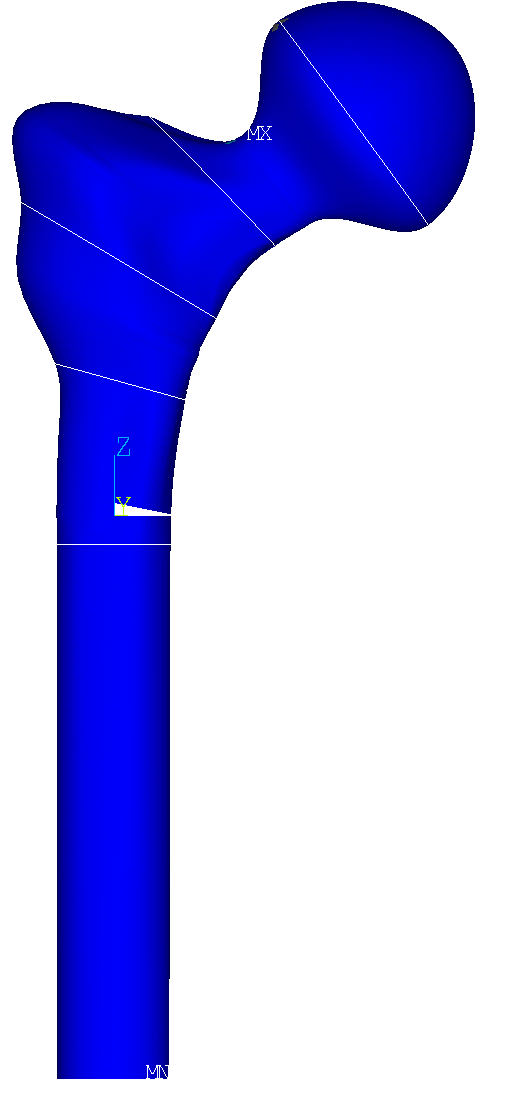Hip Fracture Prediction
It is assessed that 50% of women aged 50 or older may experience a hip fracture in their remaining life. Therefore, the prediction of hip fracture has become of prime importance. Different statistical models based on clinical data are currently available. However, the number of factors and the complexity of the phenomenon require further research to refine the prediction of these models. (Chen et al, 2012)
In order to assess the probability of fracture at 5 or 10 years, this research proposes to combine clinical and computational data. The clinical data is obtained from a Women Health Initiative (WHI) database, which includes common factors such as age and weight as well as bone mineral density (BMD) and hip geometry measurements obtained from DXA. The computational data is obtained through a fully-parameterized finite element model which can represent many possible femur shapes. This research is investigating how to combine both types of data. Preliminary results show that it is possible to obtain up to 75% "area under the curve" (AUC) using the finite element (FE) model only as a predictive model for hip fracture. (Missoum et al, 2013)
Clinical data and FE-based computational data can be combined in multiple manners. One possible way is to predict the hip fracture risks in the augmented space comprised of both clinical and computational data. This combination can increase the AUC up to 80%. (Jiang et al, 2014) The basic tool to compute probabilities of hip fracture is based on a support vector machine (SVM) trained using both clinical and computational data.
This research has led to the development of a new online hip fracture risk calculator.
 |
|
Movie 1: Distribution of maximum principal strain using FE simulations.
References:
, “A hybrid risk model for hip fracture prediction using clinical and stochastic finite element data”, Summer Biomechanics, Bioengineering, and Biotransport Conference, Snowbird, UT, June 17-20, 2015.
, “Hip fracture prediction using finite element modeling and machine learning”, 7th World Congress of Biomechanics, Boston, MA, Jul. 6 - 11, 2014.
, “Towards hip fracture prediction using finite element analysis and machine learning”, Poster presentation. Annual meeting of the American Society for Bone and Mineral Research (ASBMR), Baltimore, MD: 2013.
, “The incorporation of support vector machines and hip geometric structure assessments in the development of hip fracture risk prediction model”, Annual meeting of the American Society for Bone and Mineral Research (ASBMR), 2012.
Theme by Danetsoft and Danang Probo Sayekti inspired by Maksimer


